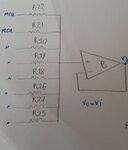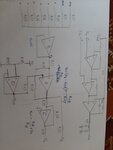omid2006
Junior Member level 1
Hi friends
I have faced an unfamiliar opamp circuit that I'll attach its diagram too. It's a unit gain opamp circuit who connected to the common node resistors that other side of resistors connected to the microcontroller pins. It's a test equipment and I don't know what's the function of this configuration.
I have faced an unfamiliar opamp circuit that I'll attach its diagram too. It's a unit gain opamp circuit who connected to the common node resistors that other side of resistors connected to the microcontroller pins. It's a test equipment and I don't know what's the function of this configuration.

